Importance of Good Emergency Procedures
Marine insurance article about emergency procedures and the Lovoy Method.
NorthStandard, one of the largest P&I clubs recently published this article about how shipping companies can improve their emergency and contingency procedures.
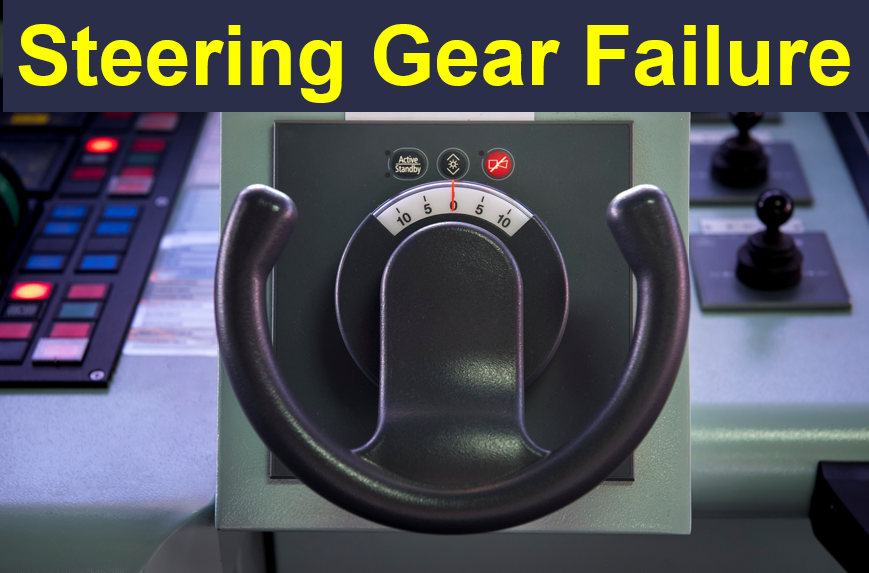
Clear and Concise: The Importance of Good Emergency Contingency Procedures
06/03/2023 Article by John Southam - Loss Prevention Executive, published in NorthStandard News.
It’s not just onboard operational procedures that need to be easy to use and understand for the crew. Emergency procedures must be too.
In recent years, ship’s operational procedures and safety management systems have been under the spotlight. Many companies have correctly realised that in many cases their procedures need serious work to make them useful for the end-user – the seafarer. Emergency procedures (or emergency contingency plans) are designed to be used under pressure; therefore, they too must be absolutely clear, easy to use, relevant, helpful and understandable.
Many vessels simply use readymade emergency procedures, such as those found in typical industry guidance material. Whilst some of this guidance provides an excellent foundation and useful examples, it should not be the final product.
An emergency procedure should help the crew resolve the situation that they are in at the time of the incident. They are not to assist them with gathering evidence, or let the crew know who to call in the aftermath of an incident. This concept has been used successfully in the aeronautical industry for decades, using a format that is clear, useful and relevant.
Here we will look at a maritime casualty case study, discuss what happened and how proper emergency procedures could have resolved the situation.
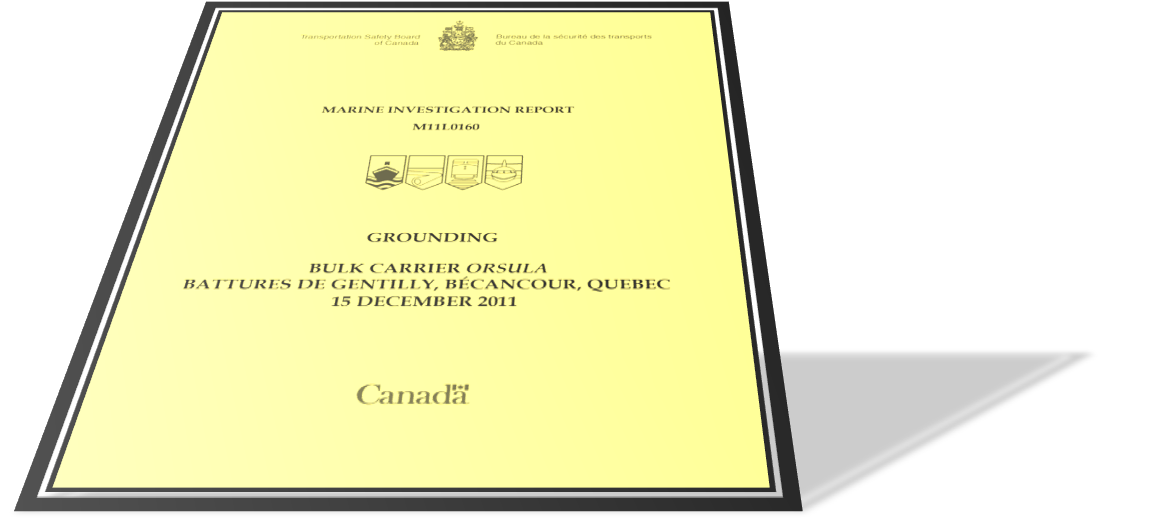
Case Study – Grounding of the Orsula
Transport Canada Marine Investigation Report M11L0160: Grounding – Orsula.
In December 2011, the bulk carrier Orsula was under pilotage in confined waters during passage from Contrecœur to Baie-Comeau, Quebec.
During the transit, the pilot ordered port helm. It was immediately noticed that the rudder angle indicator showed starboard helm. The bridge team quickly established that the rudder was not responding to any orders. The pilot ordered to engage local emergency steering system in the steering flat, to where the ship’s engineers promptly relocated.
At this time, the vessel was proceeding at 15 knots and about to leave the channel. Therefore, the decision was made to go full astern to try to prevent a grounding. When the Master arrived on the bridge, he immediately transferred the steering system switch from the port to the starboard steering system, instantly restoring control to the steering. But the Master’s actions were too late, and seven minutes after the problem was initially noticed, the vessel grounded outside the channel.
What is striking, is that in the narrative of the incident provided by the accident investigators, there is no mention of the bridge team using the onboard emergency procedures.
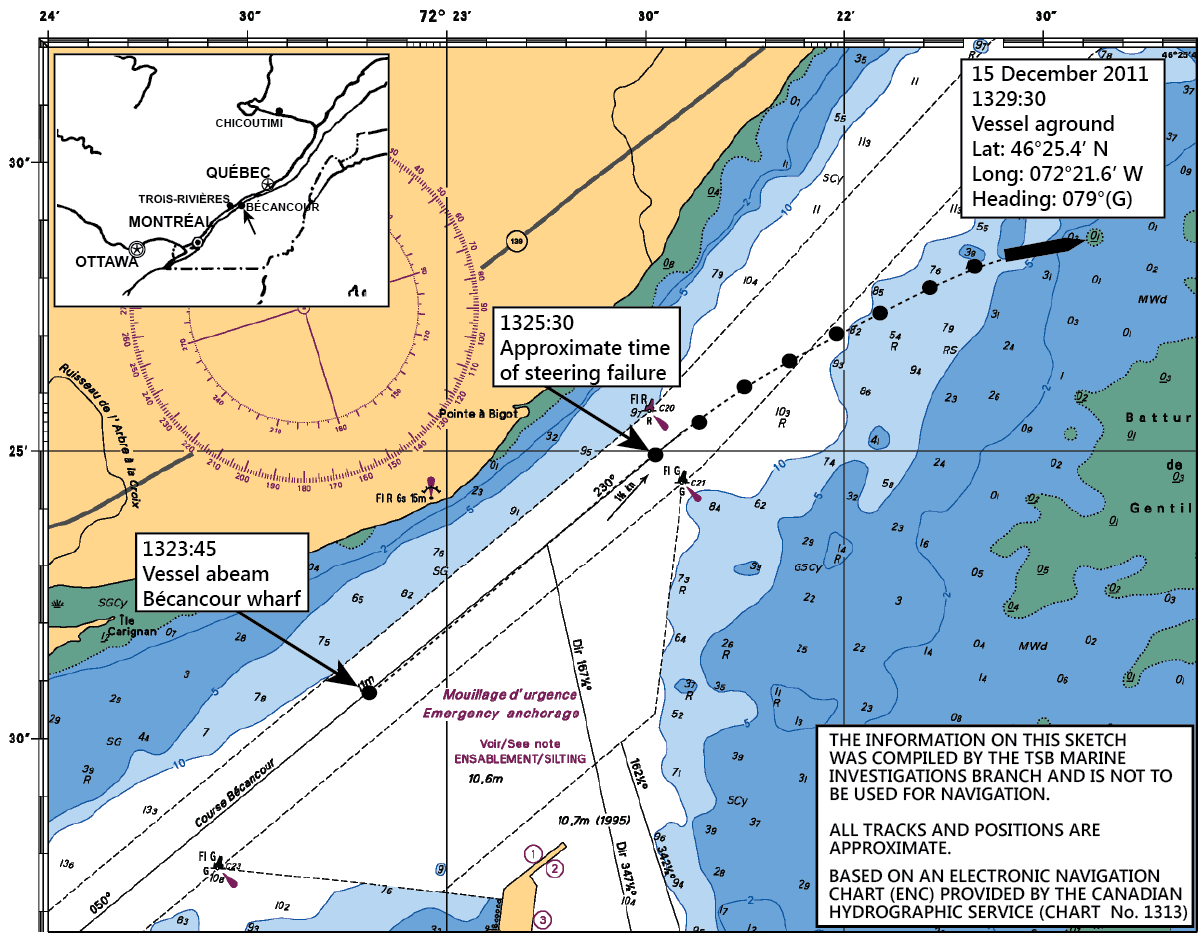
Investigation Findings
The Canadian Transport Safety Board (TSB) found that if the steering non-follow up unit (NFU) had been engaged, this would have also resolved the situation and prevented the grounding.
The official report said that when the bridge team became aware that the rudder was not responding, three options were available to rectify the situation:
- Taking over the steering control with the non-follow-up (NFU) mode
- Changing over from the port to the starboard steering system to also regain steering control
- Stopping the vessel
It was apparent that stopping the vessel was not an effective option because of the proximity to the shore and the time required to put the engine at full astern and bring the vessel to a halt.
The other two options in this situation involved regaining control of steering. There were no attempts made to use the NFU mode or to switch from the port to the starboard steering system, primarily because they were not familiar with either option. By the time the Master arrived on the bridge and switched the steering system selector switch from port to starboard, restoring control of rudder movement, it was too late to prevent the grounding.
The TSB report also stated the following:
“The procedures for dealing with situations involving steering failures refer primarily to the local emergency steering in the steering gear compartment. Use of the NFU mode, if it is referred to, is usually listed as a secondary or tertiary method to regain control.”
What Could Have Helped?
Let’s look at an example of a basic steering gear failure emergency procedure that is in use on many ships today:
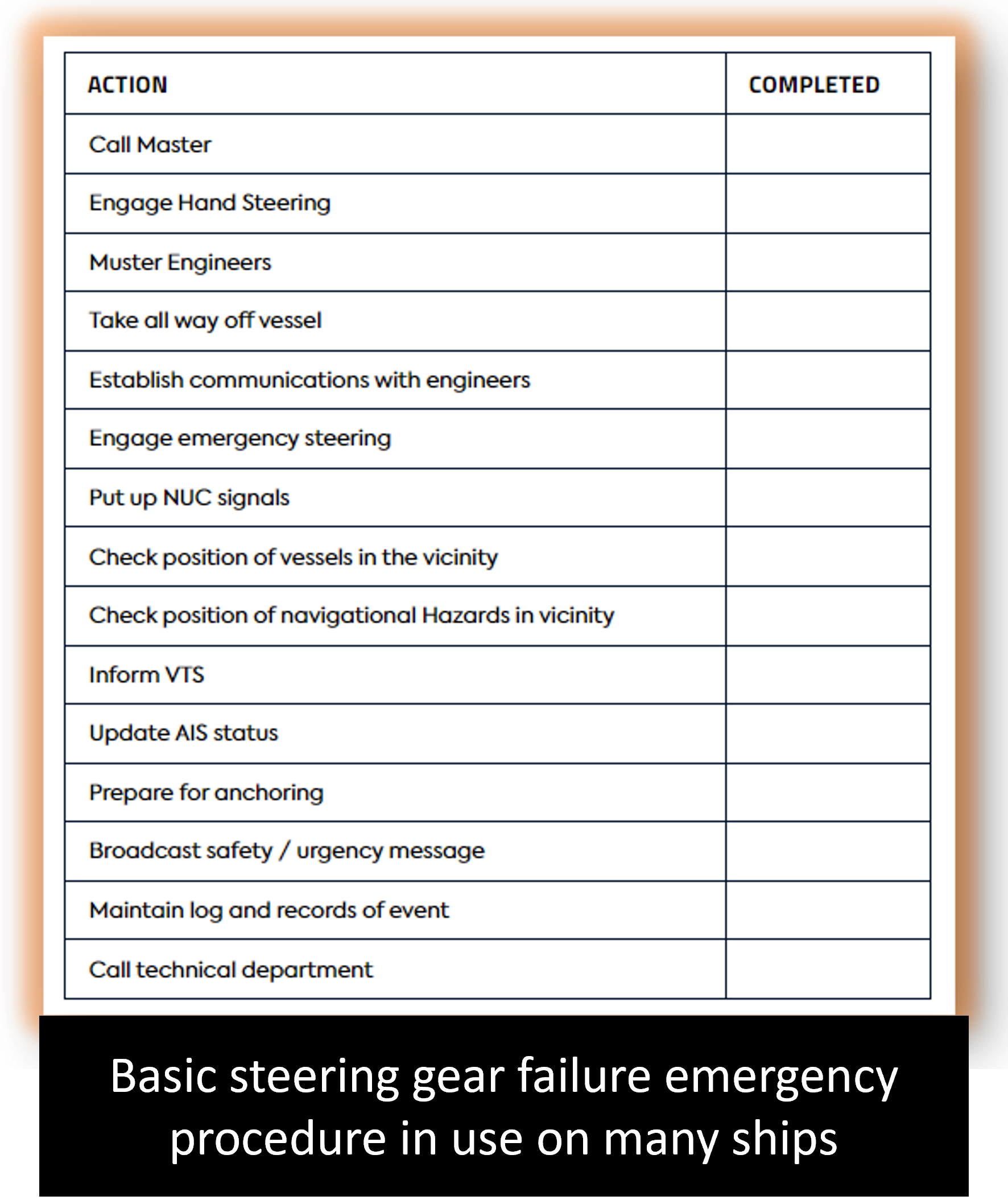
As you can see, this makes no effort to resolve the situation other than engaging emergency steering control from the steering flat – which correlates with the Canadian TSB’s observation – and slowing down. In the case of the grounding of Orsula, had the bridge team followed this, there is a strong possibility the outcome would have been the same.
The case can be made that clear and concise emergency procedures could have helped in preventing the grounding. Simple, relevant, sequential, step by step points that list the necessary actions, starting with those that are the most basic and then providing alternatives if the previous actions did not resolve the situation.
When developing the procedure or checklist, it is important to remember that this is an emergency situation. As such, the steps must be relevant to solving the emergency. Less-critical steps, such as reminders for the crew to call the office and preserving evidence should be addressed in a separate list for after the event.
You can see an example of what the emergency procedure for steering gear failure on Orsola could have looked like below.
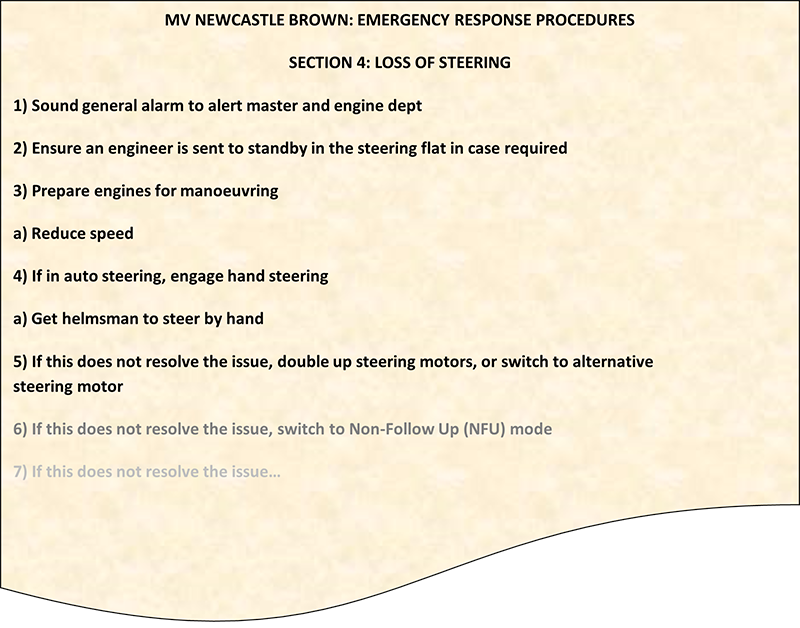
The text above only shows the first actions of the procedure which continues with several other troubleshooting steps. Note that this example is not using Lovoy Graphic Layout.
If the bridge team of Orsola had used this emergency procedure, the situation could have been resolved by step 5.
How to Generate Clear and Concise Emergency Procedures?
The above example of an emergency procedure was made using the Lovoy method by two seafarers applying their knowledge: one Master Mariner and one Chief Engineer. These are ultimately the people that may rely on this document and need to understand its content. We believe it is important to seek the input of the seafarers working in your fleet, as they are the ones who will provide invaluable insight into what really happens on board and how things really work.
Of course, every vessel is different, and no one-size fits all. Therefore, the order in which some of actions listed can differ depending on vessel, equipment and even the potential end user. This is why it is important that procedures are made in-house by the company and the end users.
Lovoy Training Inc. specialises in supporting shipping companies to simplify and improve their safety management systems. The Lovoy team explains how most companies use a generic steering gear failure procedure that does not included all their ship’s common backup systems.
Steering gear failure is only one of many emergency procedures which shipping companies should customise. The goal is to capture the company’s experience. This should include the silent knowledge of the most experienced seafarers and the company’s cross-fleet class requirements.
Find out More
In 2023, NorthStandard will recommence its Safety Management 2.0 workshops for its members. This workshop incorporates a day’s workshop with the Lovoy Team where both the simplification of the safety management systems and emergency procedures will be covered.
Read more about our Safety Management 2.0 workshops here.
You can read more about Lovoy’s research here.